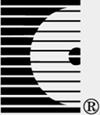SigPurifier:无线通信中对抗性信号净化的双域扩散框架
IF 4.4
3区 计算机科学
Q2 TELECOMMUNICATIONS
引用次数: 0
摘要
随着深度学习的快速发展,其强大的特征提取能力在无线信号调制分类中显示出巨大的优势。然而,受模型固有脆弱性的限制,基于深度学习的调制分类模型容易受到对抗性攻击。因此,集成过滤机制和对抗学习的防御框架已经被开发出来。然而,这些方法一直面临着信号处理中过度的特征退化或对先验知识假设的无根据依赖的双重困境,最终阻碍了现实世界的部署。在这封信中,我们提出了SigPurifier,这是一个基于扩散的框架,通过正向扩散消除局部数据结构中的对抗性扰动,同时在信号去噪过渡期间通过学习生成先验增强结构恢复。评估结果表明,该算法在保持信号通信质量的前提下,有效地消除了对抗性攻击。与对抗训练方法相比,我们的模型可以将调制分类器的准确率从27.46%提高到31.08%。本文章由计算机程序翻译,如有差异,请以英文原文为准。
SigPurifier: A Dual-Domain Diffusion Framework for Adversarial Signal Purification in Wireless Communication
With the rapid development of deep learning, its powerful feature extraction capabilities have shown great advantages in wireless signal modulation classification. However, limited by the inherent fragility of the model, deep learning-based modulation classification models are vulnerable to adversarial attacks. Consequently, defense frameworks integrating filtering mechanisms and adversarial learning have been developed. Yet, such approaches persistently confront the dual dilemmas of excessive feature degradation in signal processing or unwarranted dependence on prior knowledge assumptions, ultimately hindering real-world deployment. In this letter, we propose SigPurifier, a diffusion-based framework that eliminates adversarial perturbations in local data structures through forward diffusion while enhancing structural recovery through learned generative priors during signal denoising transitions. The evaluation results show that the proposed algorithm effectively eliminates adversarial attacks while maintaining signal communication quality. Compared to adversarial training methods, our model can increase the accuracy of the modulation classifier from 27.46% to 31.08%.
求助全文
通过发布文献求助,成功后即可免费获取论文全文。
去求助
来源期刊

IEEE Communications Letters
工程技术-电信学
CiteScore
8.10
自引率
7.30%
发文量
590
审稿时长
2.8 months
期刊介绍:
The IEEE Communications Letters publishes short papers in a rapid publication cycle on advances in the state-of-the-art of communication over different media and channels including wire, underground, waveguide, optical fiber, and storage channels. Both theoretical contributions (including new techniques, concepts, and analyses) and practical contributions (including system experiments and prototypes, and new applications) are encouraged. This journal focuses on the physical layer and the link layer of communication systems.
 求助内容:
求助内容: 应助结果提醒方式:
应助结果提醒方式:


